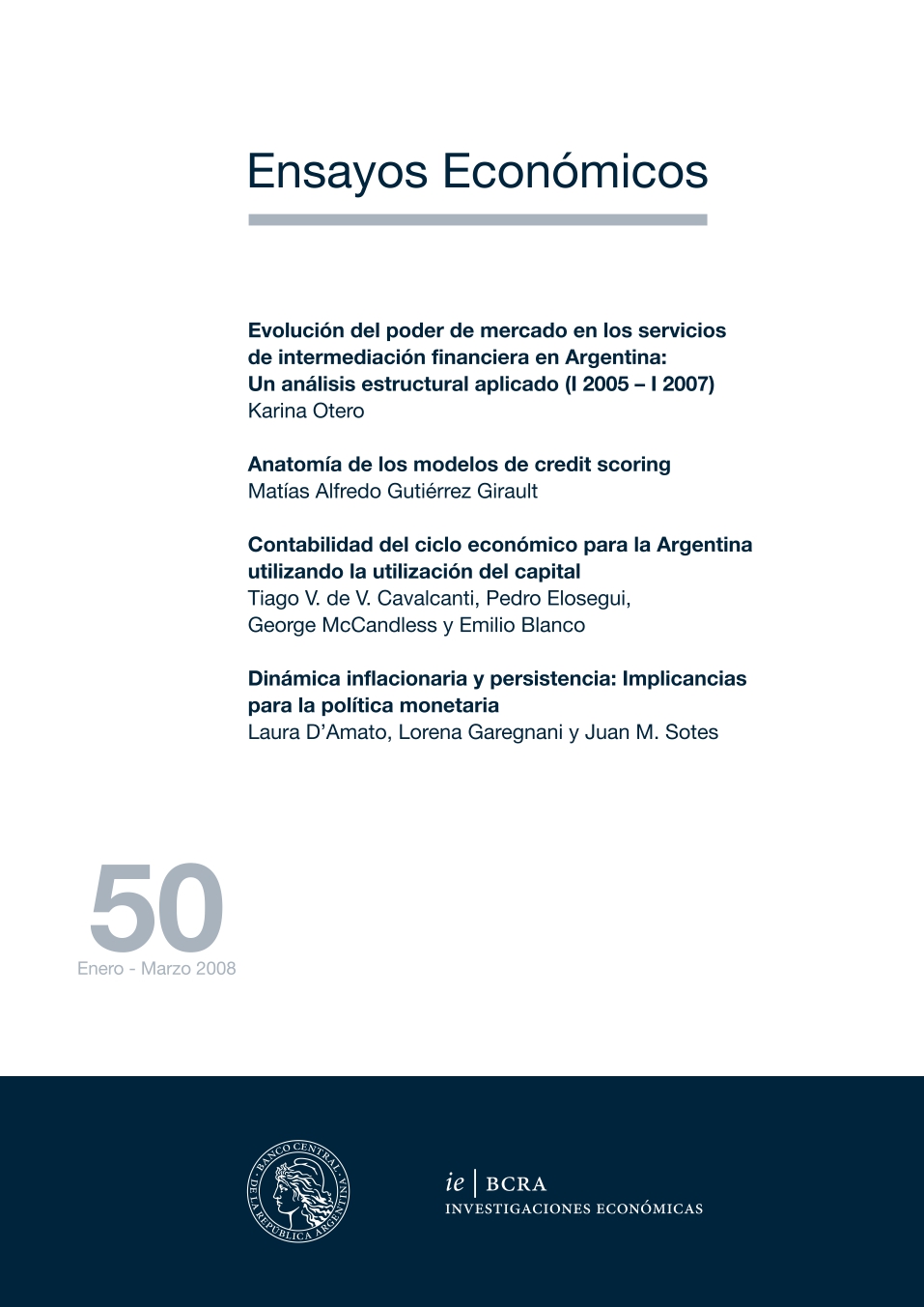Business cycle accounting for Argentina utilizing capital utilization
Keywords:
Business Cycle, Capital Utilization, Distortion MeasuresAbstract
Using a variation of the business cycle accounting method of Chari, Kehoe and McGrattan (2007), the business cycle of Argentina is studied in the period between 1972 and 2006. The method assumes an accounting decomposition of the cycle into four gaps. Capital utilization is used as a household decision variable to better extract the gap that functions as a capital tax. When applying the model to Argentina, we verify that all four gaps are important to explain the evolution of the product during the period considered (although the “net exports” factor is the least important). The main political sub-periods can be characterized by the relative importance of each of the gaps. We compare the results of this technique with conventional narrative.
JEL classification: E22 ; E32 ; N16




